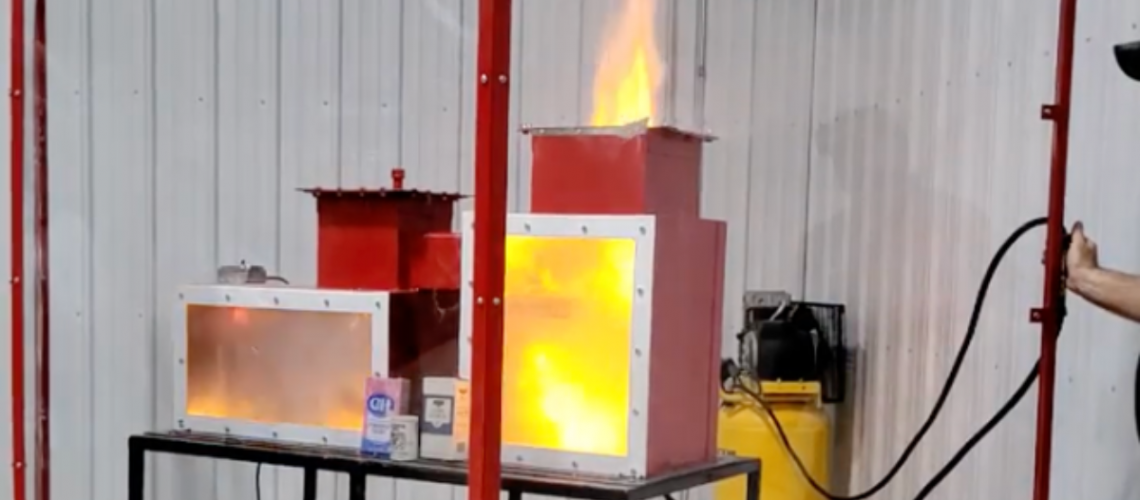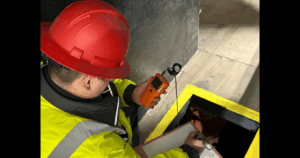Dust explosions are a significant safety concern in many industries, especially those involving combustible materials like grain, wood, metal, and chemicals. When dust accumulates and becomes airborne, it can create an explosive atmosphere if not properly managed.
To help you protect your workers and your facility, we’ll explore the nature of dust explosions, the importance of dust management, and how to implement effective safety measures to prevent such incidents.
What is Combustible Dust? How Do Dust Explosions Happen?
Combustible dust refers to fine particles that can ignite and explode when suspended in the air under certain conditions. Common sources of combustible dust include materials like grain, wood, metals, rubber and various chemicals. When these materials are processed, they can produce dust that becomes airborne, leading to the risk of dust explosions if not managed properly.
A dust explosion occurs when a cloud of fine particles is ignited in a confined space, causing a rapid expansion of gases and a powerful explosion. This hazard is prevalent in industries such as grain handling, woodworking, and chemical manufacturing, where dust accumulation can easily occur.
Key Factors Contributing to Dust Explosions
Dust explosions require five elements, often referred to as the “Dust Explosion Pentagon”:
- Combustible Dust: Presence of an explosive material that can ignite.
- Dust Dispersion: Fine particles suspended in the air.
- Confinement: The dust cloud is confined within a space, such as a grain elevator or a silo.
- Oxygen: Combustible dust needs oxygen to ignite.
- Ignition Source: A spark, hot surface, or static electricity that ignites the dust.
By controlling dust accumulation and removing any of these elements, the risk of dust explosions can be significantly reduced.
(Watch as Mark Warner, Arnco’s Safety Operations Manager, demonstrates a dust explosion.)
Understanding the NFPA 660 Standard
The NFPA 660 Standard for Combustible Dust is an essential guideline for preventing and mitigating dust-related fires and explosions. This standard consolidates several existing guidelines into a comprehensive document that addresses the unique challenges posed by dust hazards across different industries.
The NFPA 660 Standard outlines several critical safety guidelines, including:
- Risk Assessment: Regularly assessing your facility to identify potential dust explosion risks.
- Engineering Controls: Implementing dust collection systems to reduce dust levels and prevent accumulation.
- Administrative Controls: Developing procedures to manage and mitigate fire and explosion risks.
- Training: Providing education on explosion prevention, including safe handling practices and emergency response.
Preventing Grain Dust Explosions in Grain Handling Facilities
Grain dust explosions are a specific type of dust explosion that occur in grain handling facilities such as silos and elevators. Grain dust is highly combustible, and many explosions have occurred due to poor management of grain dust levels. Proper grain elevator management and dust management are critical to preventing such incidents.
Key practices for preventing grain dust explosions include:
- Regular Housekeeping and Sanitation: Maintaining cleanliness to prevent dust buildup on equipment and surfaces.
- Effective Dust Aspiration Systems: Using systems designed to capture dust at the source before it becomes airborne.
- Explosion Prevention Measures: Installing explosion venting systems and other safety devices.
- Environmental Monitoring Systems: Implementing environmental sensors and particulate monitors to continuously track dust levels.
The Role of Dust Collection and Aspiration Systems
Effective dust collection systems and dust aspiration systems play a vital role in managing dust emissions and preventing explosions. These systems capture and remove dust from the air, reducing the likelihood of an explosive atmosphere forming. By integrating environmental monitoring systems, facilities can proactively manage dust levels and respond quickly to potential hazards.
For example, the DumoPro Dust Monitor provides real-time monitoring of dust concentrations, ensuring that facilities remain within safe limits. By using advanced air monitors and environmental sensors, companies can better control dust levels and reduce the risk of explosions.
Enhance Safety with Proper Training and Equipment
Effective dust management and explosion prevention go beyond just installing equipment; they also involve training employees and establishing a culture of safety. Comprehensive training on combustible dust hazards, the proper use of dust collection systems and adherence to safety guidelines can significantly reduce the risks associated with dust explosions.
Combustible dust poses a serious risk in various industries, but with the right safety measures, the dangers of dust explosions can be effectively managed. Investing in dust management systems, training and regular risk assessments are critical steps in protecting your workplace from dust-related incidents.
Arnco Safety is committed to providing the best solutions for dust explosion prevention, offering a range of particulate monitors, environmental monitoring systems, and relevant training opportunities. Our goal is to help you comply with OSHA and NFPA standards while maintaining a safe and productive workplace.
Register for courses at the Arnco Safety Training Center: https://arncosafety.com/safety-training-center/







